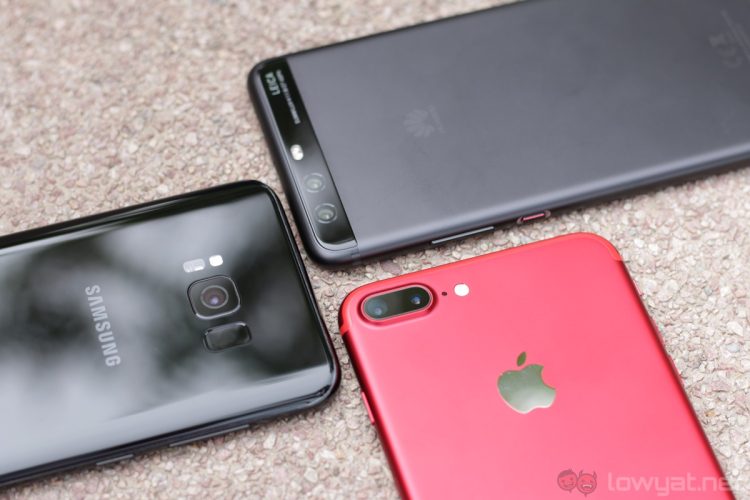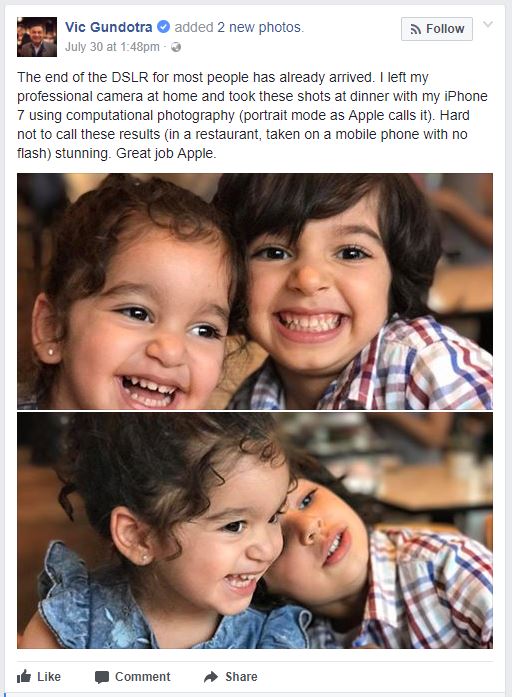Smartphone photography is fast becoming a warzone for fanboys. While most enthusiasts have long fought hard in the Canon vs Nikon vs Sony space, the advancements in mobile photography is giving rise to the debate whether the iPhone still has the best camera.
An ex-Google SVP for engineering, Vic Gundotra, poked the hornet’s nest again via a post on his Facebook page. Gundotra, who was in Google for seven years and is widely believed to be the man behind Google+, posted two photos shot with the iPhone 7 Plus, praising the camera’s computational photography and hailing “the end of the DSLR”.
It didn’t take long for the comments to flood in. Responding to comments claiming that Android phones like the Google Pixel and Samsung Galaxy S8 is capable of better performance, Gundotra replies:
Here is the problem: It’s Android. Android is an open source (mostly) operating system that has to be neutral to all parties. This sounds good until you get into the details. Ever wonder why a Samsung phone has a confused and bewildering array of photo options? Should I use the Samsung Camera? Or the Android Camera? Samsung gallery or Google Photos?
It’s because when Samsung innovates with the underlying hardware (like a better camera) they have to convince Google to allow that innovation to be surfaced to other applications via the appropriate API. That can take YEARS.
Also the greatest innovation isn’t even happening at the hardware level – it’s happening at the computational photography level. (Google was crushing this 5 years ago – they had had “auto awesome” that used AI techniques to automatically remove wrinkles, whiten teeth, add vignetting, etc… but recently Google has fallen back).
Apple doesn’t have all these constraints. They innovate in the underlying hardware, and just simply update the software with their latest innovations (like portrait mode) and ship it.
Bottom line: If you truly care about great photography, you own an iPhone. If you don’t mind being a few years behind, buy an Android.
Some parts of his comment are inaccurate. For example, all Android smartphones ship with only one camera app (even if there may be Google Photos on top of a dedicated Gallery app – though that in no way affects image quality). And, as mentioned by Extreme Tech, all Android OEMs manage their own image processing algorithms (for obvious reasons – the smartphone camera is a key differentiating factor for Android devices).
In addition, Google’s computational photography efforts are clearly seen in the Pixel smartphone’s HDR+ mode, which has been positively reviewed globally. Gundotra is right that innovation is taking place via software – but a good camera sensor is just as important.
On the other hand, Gundotra does have a point. Apple’s tight vertical integration of its hardware and software means there is less hassle to ship a new feature than an Android OEM.
That said, innovations in computational photography on all major smartphone makers are yielding greater smartphone cameras, Android or not. Both Samsung and Google have improved dramatically over the years, and Apple’s position as the best smartphone camera no longer holds true – the truth is, there isn’t any single “best” smartphone camera right now.
(Source: Vic Gundotra (Facebook) via 9to5Mac)



